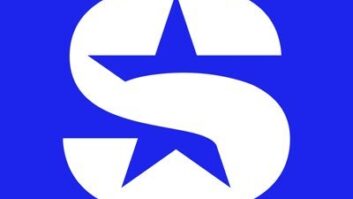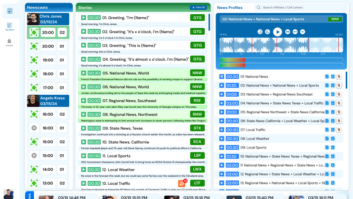Twice each year, around the spring and fall equinoxes, there’s a period of several days when reception of satellite signals is interrupted briefly. This happens when the Sun lines up directly behind a particular satellite. The result is an increase in solar “noise” that drowns out the relatively weak signal being received from the satellite.

Fig. 1: Twenty minutes before the satellite outage occurs.

Fig. 2: Five minutes before the outage.

Fig. 3: The shadow has just passed the center of the dish.

Fig. 4: Twenty minutes after the outage.
During these outages, which last a few minutes, delivery of live satellite programming or other content is blocked, and you must switch to some alternate means of delivery or utilize programming content that you have on hand and is not dependent on the satellite.
Note the location of the shadow from the feed horn in the accompanying photos: Fig. 1 is about 20 minutes before the outage begins. Fig. 2 is 5 minutes before the outage starts. In Fig. 3, the shadow is just past the center of the dish — the sun is aligned directly behind the satellite that the dish is aimed at — and satellite programming fails. Fig. 4 shows the dish 20 minutes after the outage is over.
Share these pictures with your general manager and operations or program directors to help explain the problem and need for solution.
Thanks to New Hampshire Public Radio’s Steven Donnell for this informative tutorial. Steve recommends if you are a new operations manager or chief engineer at a station that uses satellite formats, make sure you have an outage plan in place for the next occurrence.
***
We’re always looking for more efficient ways to solve our engineering problems.
In the June 21 Workbench column an important point was overlooked when discussing the use of the Sescom XLR-to-RJ45 adapters.
The pinout of the RJ45 is not StudioHub+ compatible. The Sescom adapters will not enable you to directly connect a piece of audio gear to, say, an Axia xNode or a WheatNet-IP blade, or anything that uses an RJ45 for audio with the StudioHub+ pinout. As StudioHub+ has become a de-facto wiring standard for many analog and AoIP facilities, this compatibility is important.

Fig. 5: The male XLR-to-RJ45 adaptor by Excalibur Electronics.

Fig. 6: The female version — note the silk-screened pinout on the adaptor.
This information was provided by William Harrison, owner of Excalibur Electronics.
In addition to pointing this out, he offers a solution. StudioHub+ compatible versions of the adapters do exist and are being sold by Excalibur Electronics. The male adaptor is shown in Fig. 5, the female adaptor in Fig. 6.
The adaptors also enable a user to connect an AES input or output to any StudioHub+ compatible device, such as a WheatNet-IP blade or an Axia xNode. They can also connect left channel analog audio, such as you might find on a phone hybrid. And they can plug directly into a microphone so that it can be connected to an RJ45 mic input with a shielded CAT-5 cable.
I like that William has silk-screened the pinout on the connector — no hookup confusion this way!
The adaptors are available for $8 each and are distributed by Broadcasters General Store.
The Excalibur website is under construction but more information can be obtained by emailing William Harrison at [email protected].
Longtime broadcast engineers may recall the company name. Excalibur Electronics was started decades ago by the late broadcast engineer Bill Ashley and sold to William Harrison in 2009.
The company was best known for the HC-1 Telephone Handi Coupler, the HA-1 Telephone Hybrid Controller and the CDA-1 Composite Distribution Amplifier. All of these are still in production. Excalibur Electronics is also co-creator of the iRoute Livewire Axia Controller with Fred Gleason of Paravel Systems.
***
Winston Hawkins finds some of the coolest YouTube videos. His latest submission is a collection of tool hacks. How about accurate tape measurements using a pencil and binder clip, or emergency wire strippers using a pencil sharpener and clothespin?
Watch it online at https://tinyurl.com/n3uzphb.
Contribute to Workbench. You’ll help fellow engineers and qualify for SBE recertification credit. Send Workbench tips and high-resolution photos to [email protected]. Fax to (603) 472-4944.
Author John Bisset has spent 48 years in the broadcasting industry and is still learning. He handles Western U.S. radio sales for the Telos Alliance. He is SBE-certified and is a past recipient of the SBE’s Educator of the Year Award.












